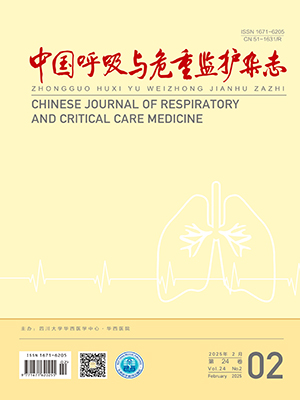| 1. |
Cecconi M, De Backer D, Antonelli M, et al. Consensus on circulatory shock and hemodynamic monitoring. Task force of the European Society of Intensive Care Medicine. Intensive Care Med, 2014, 40(12): 1795-1815.
|
| 2. |
Sakka SG, Reinhart K, Meier-Hellmann A. Comparison of pulmonary artery and arterial thermodilution cardiac output in critically ill patients. Intensive Care Med, 1999, 25(8): 843-846.
|
| 3. |
Beurton A, Teboul JL, Monnet X. Transpulmonary thermodilution techniques in the haemodynamically unstable patient. Curr Opin Crit Care, 2019, 25(3): 273-279.
|
| 4. |
Monnet X, Teboul JL. Transpulmonary thermodilution: advantages and limits. Crit Care, 2017, 21(1): 147.
|
| 5. |
李红. PICCO 在 ICU 危重患者的临床应用及护理进展. 医学信息, 2015, 28(19): 346-347.
|
| 6. |
Reuter DA, Huang C, Edrich T, et al. Cardiac output monitoring using indicator-dilution techniques: basics, limits, and perspectives. Anesth Analg, 2010, 110(3): 799-811.
|
| 7. |
Rath GP, Bithal PK, Toshniwal GR, et al. Saline flush test for bedside detection of misplaced subclavian vein catheter into ipsilateral internal jugular vein. Br J Anaesth, 2009, 102(4): 499-502.
|
| 8. |
Liu Y, Wei LQ, Li GQ, et al. Pulse pressure variation adjusted by respiratory changes in pleural pressure, rather than by tidal volume, reliably predicts fluid responsiveness in patients with acute respiratory distress syndrome. Crit Care Med, 2016, 44(2): 342-351.
|
| 9. |
Malbrain M, Van Regenmortel N, Saugel B, et al. Principles of fluid management and stewardship in septic shock: it is time to consider the four D's and the four phases of fluid therapy. Ann Intensive Care, 2018, 8(1): 66.
|
| 10. |
Tagami T, Ong MEH. Extravascular lung water measurements in acute respiratory distress syndrome: why, how, and when?. Curr Opin Crit Care, 2018, 24(3): 209-215.
|
| 11. |
Jozwiak M, Teboul JL, Monnet X. Extravascular lung water in critical care: recent advances and clinical applications. Ann Intensive Care, 2015, 5(1): 38.
|
| 12. |
Hofkens PJ, Verrijcken A, Merveille K, et al. Common pitfalls and tips and tricks to get the most out of your transpulmonary thermodilution device: results of a survey and state-of-the-art review. Anaesthesiol Intensive Ther, 2015, 47(2): 89-116.
|
| 13. |
Sakka SG, Ruhl CC, Pfeiffer UJ, et al. Assessment of cardiac preload and extravascular lung water by single transpulmonary thermodilution. Intensive Care Med, 2000, 26(2): 180-187.
|
| 14. |
Smit JM, Raadsen R, Blans MJ, et al. Bedside ultrasound to detect central venous catheter misplacement and associated iatrogenic complications: a systematic review and meta-analysis. Crit Care, 2018, 22(1): 65.
|
| 15. |
Bekele NA, Abebe WA, Shifa JZ. Misplaced subclavian central venous catheter. Pan Afr Med J, 2017, 27: 59.
|
| 16. |
Yu WQ, Zhang Y, Zhang SY, et al. Impact of misplaced subclavian vein catheter into jugular vein on transpulmonary thermodilution measurement variables. J Zhejiang Univ Sci B, 2016, 17(1): 60-66.
|
| 17. |
Verhoeff K, Mitchell JR. Cardiopulmonary physiology: why the heart and lungs are inextricably linked. Adv Physiol Educ, 2017, 41(3): 348-353.
|
| 18. |
Vieillard-Baron A, Matthay M, Teboul JL, et al. Experts’ opinion on management of hemodynamics in ARDS patients: focus on the effects of mechanical ventilation. Intensive Care Med, 2016, 42(5): 739-749.
|
| 19. |
Chen SL, Chen LF, Du ZS, et al. Influence of injection rates of calibrating standard solution on monitoring pulse indicator continuous cardiac output. Biomed Eng Online, 2018, 17(1): 34.
|
| 20. |
Wang H, Cui N, Su LX, et al. Prognostic value of extravascular lung water and its potential role in guiding fluid therapy in septic shock after initial resuscitation. J Crit Care, 2016, 33: 106-113.
|
| 21. |
张灯亮, 何先弟, 刘杰, 等. PiCCO 监测下的目标导向集束化治疗脓毒性休克的疗效及相关血流动力学指标对预后的诊断价值. 中国急救医学, 2020, 40(6): 536-541.
|
| 22. |
Soussi S, Deniau B, Ferry A, et al. Low cardiac index and stroke volume on admission are associated with poor outcome in critically ill burn patients: a retrospective cohort study. Ann Intensive Care, 2016, 6(1): 87.
|
| 23. |
Stephan F, Mazeraud A, Laverdure F, et al. Evaluation of reperfusion pulmonary edema by extravascular lung water measurements after pulmonary endarterectomy. Crit Care Med, 2017, 45(4): e409-e417.
|
| 24. |
Pottecher J, Roche AC, Degot T, et al. Increased extravascular lung water and plasma biomarkers of acute lung injury precede oxygenation impairment in primary graft dysfunction after lung transplantation. Transplantation, 2017, 101(1): 112-121.
|
| 25. |
Tran-Dinh A, Augustin P, Dufour G, et al. Evaluation of cardiac index and extravascular lung water after single-lung transplantation using the transpulmonary thermodilution technique by the PiCCO2 device. J Cardiothorac Vasc Anesth, 2018, 32(4): 1731-1735.
|
| 26. |
Bhattacharjee A, Pradhan D, Bhattacharyya P, et al. How useful is extravascular lung water measurement in managing lung injury in intensive care unit?. Indian J Crit Care Med, 2017, 21(8): 494-499.
|
| 27. |
Nolan ME, Yadav H, Cawcutt KA, et al. Complication rates among peripherally inserted central venous catheters and centrally inserted central catheters in the medical intensive care unit. J Crit Care, 2016, 31(1): 238-242.
|
| 28. |
Nusmeier A, van der Hoeven JG, Lemson J. Interpretation of the transpulmonary thermodilution curve in the presence of a left-to-right shunt. Intensive Care Med, 2011, 37(3): 550-551.
|




